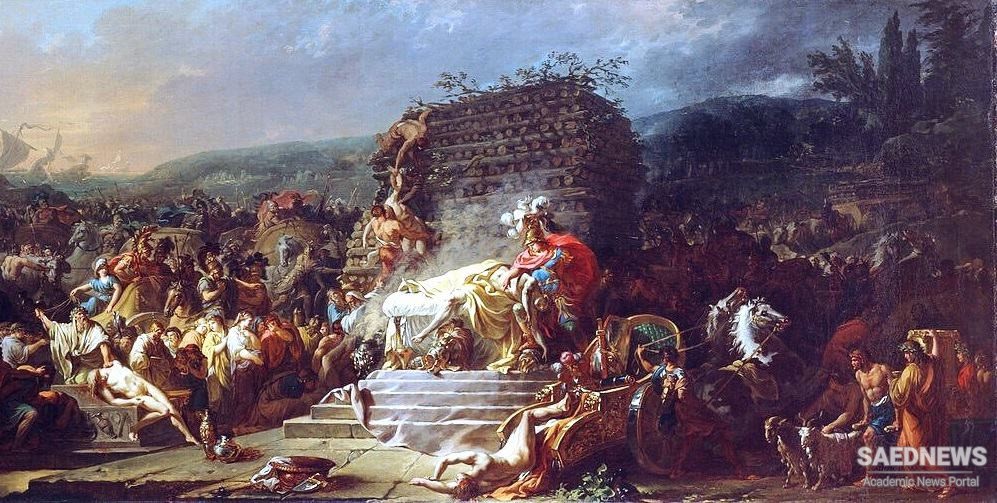The story of Baal's battle with Yam-Nahar, the god of the seas and rivers, is told on tablets that date back to the fourteenth century BCE. Baal and Yam both lived with El, the Canaanite High God. At the Council of El, Yam demands that Baal be delivered up to him. With two magic weapons, Baal defeats Yam and is about to kill him when Asherah (El's wife and mother of the gods) pleads that it is dishonourable to slay a prisoner. Baal is ashamed and spares Yam, who represents the hostile aspect of the seas and rivers which constantly threaten to flood the earth, while Baal, the Storm God, makes the earth fertile.
In another version of the myth, Baal slays the seven-headed dragon Lotan, who is called Leviathan in Hebrew. In almost all cultures, the dragon symbolises the latent, the unformed and the undifferentiated. Baal has thus halted the slide back to primal formlessness in a truly creative act and is rewarded by a beautiful palace built by the gods in his honour. In very early religion, therefore, creativity was seen as divine: we still use religious language to speak of creative 'inspiration' which shapes reality anew and brings fresh meaning to the world.
But Baal undergoes a reverse: he dies and has to descend to the world of Mot, the god of death and sterility. When he hears of his son's fate, the High God El comes down from his throne, puts on sackcloth and gashes his cheeks but he cannot redeem his son. It is Anat, Baal's lover and sister, who leaves the divine realm and goes in search of her twin soul, 'desiring him as a cow her calf or a ewe her lamb'. When she finds his body, she makes a funeral feast in his honour, seizes Mot, cleaves him with her sword, winnows, burns and grinds him like corn before sowing him in the ground. Similar stories are told about the other great goddesses - Inana, Ishtar and Isis - who search for the dead god and bring new life to the soil.
The victory of Anat, however, must be perpetuated year after year in ritual celebration. Later - we are not sure how, since our sources are incomplete - Baal is brought back to life and restored to Anat. This apotheosis of wholeness and harmony, symbolised by the union of the sexes, was celebrated by means of ritual sex in ancient Canaan. By imitating the gods in this way, men and women would share their struggle against sterility and ensure the creativity and fertility of the world. The death of a god, the quest of the goddess and the triumphant return to the divine sphere were constant religious themes in many cultures and would recur in the very different religion of the One God worshipped by Jews, Christians and Muslims.


 The World Seen from the Point of View of Being and Reality
The World Seen from the Point of View of Being and Reality














































